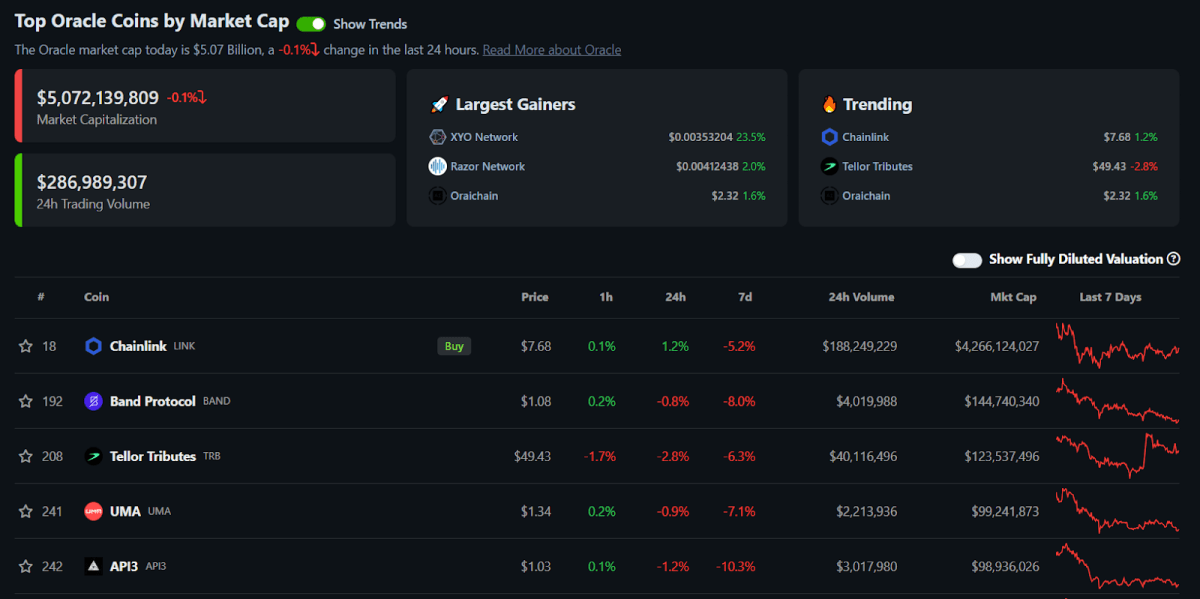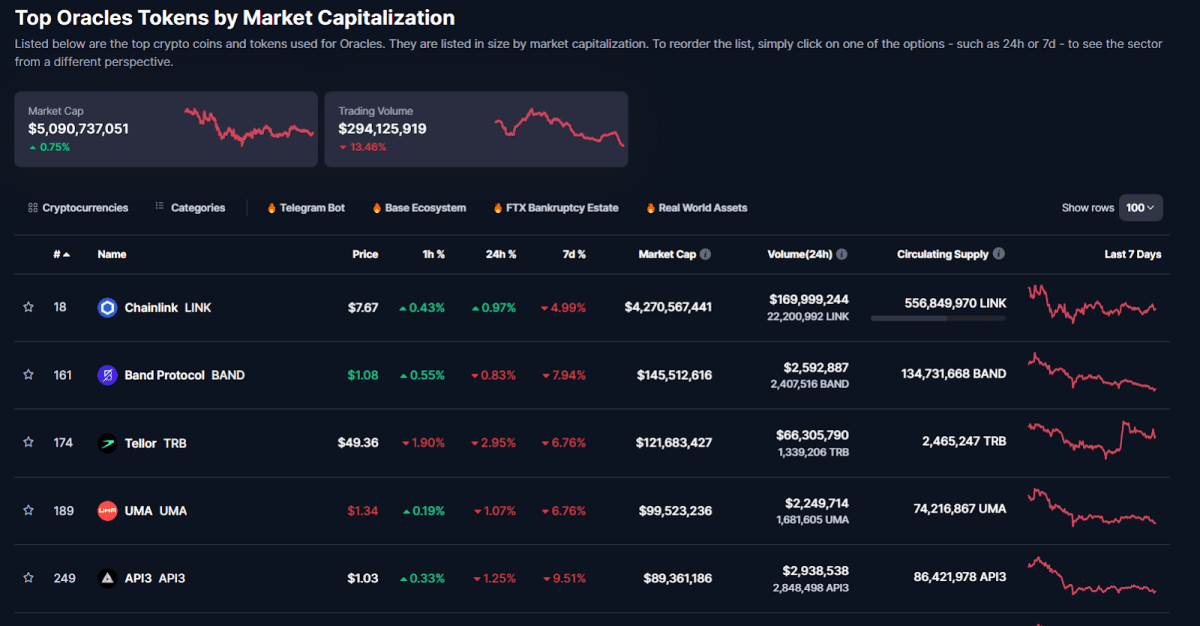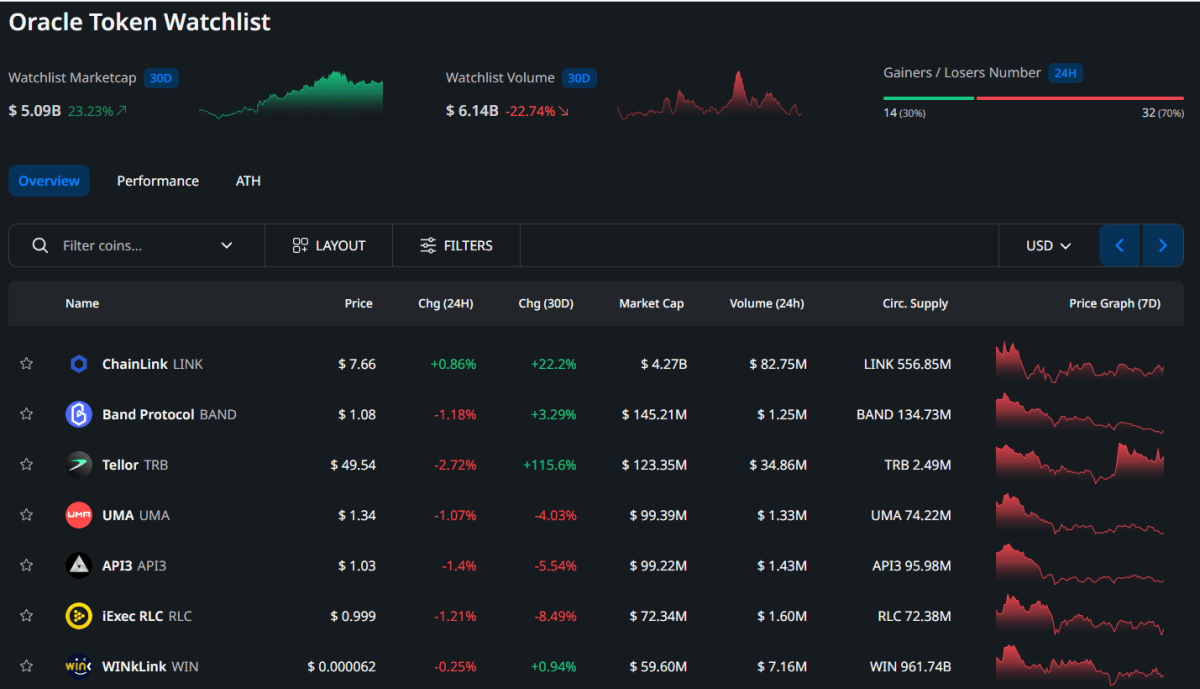Crypto Oracles: An Overview and Key Projects

An oracle is a protocol that enables blockchains to pull accurate and current data from external sources or the real world.
As the DeFi ecosystem expanded, a significant challenge arose: the need to securely exchange varied, verified data outside blockchains—chiefly up-to-date asset prices, liquidity metrics in trading pairs, and wallet activity metrics. Historically, much of this information was sourced from centralized outlets, often raising concerns about their validity and objectivity.
This is where blockchain oracles step in. We'll explore their core mechanics, their pivotal role in the crypto realm, and spotlight major oracle players in the industry.
Key Features of Oracles
Smart contracts are immutable structures, and making alterations to them requires considerable resources and time. Therefore, many decentralized systems rely on oracles, which provide swift access to vital information, ensuring the accurate execution of smart contract conditions.
The core characteristics of cryptocurrency oracles include:
■ Prompt provision of verified external data.
■ Decentralization. Data integration through oracles bypasses any centralized influence, reducing risks of hacking, system downtime, or inherent biases.
■ Unique methods of data transmission. This can be a specific mechanism inherent to the oracle or its ability to interface with APIs.
■ Crypto tokens. In the context of oracles, these tokens are utilized for tasks like voting, addressing disputes, and awarding payouts.
■ Multi-tiered validation. This ensures that oracles feed blockchains with trustworthy data, thereby bolstering user trust.
Essentially, cryptocurrency oracles act as a bridge between the real world and blockchain environments.
Data Types Gathered by Oracles
Cryptocurrency protocols, serving as oracles, accumulate a range of information:
● Financial Data: This encompasses up-to-date market values of tokens and cryptocurrencies, exchange rates on various centralized and decentralized platforms, trading volumes, wallet balances, and specifics of transfers' frequency and quantity.
● Geographic Data: This can refer to geolocation, exact coordinates, and maps.
● Transportation Data: Useful for monitoring the flow of vehicles, trains, and other modes of transport.
● Voting Results: Establishing trust among voters is essential, especially in Decentralized Autonomous Organizations (DAOs).
● Sports Statistics: Useful for crypto projects tied to fan tokens or sports betting.
● Consumer Spending Patterns: Information about expenditures on food, non-food items, real estate, etc., allows projects to design specific marketing or advertising campaigns.
In reality, this list could be exhaustive because various crypto projects have unique data requirements. On occasion, the current weather or climatic conditions might be necessary for a smart contract's proper function.
Reasons and Objectives for Data Gathering
Oracles collate and structure data within certain smart contracts or blockchains for several key reasons:
● Maintaining Current and Secure DeFi Services: Continuous real-time updates from external sources and other blockchain systems are crucial for DeFi projects to remain effective and secure.
● Managing Projects and Ensuring Transparent Voting: Oracles support the effective administration of projects and ensure that voting results are decentralized and verified honestly.
● Advancement of Gaming Platforms: Through oracles, insights into game dynamics, player numbers, and their duration of activity can be tracked.
● Protection Against Deceptive Actors and Detrimental Smart Contracts.
The foundation of any cryptocurrency initiative hinges on the reliability and timeliness of its data. Without these factors, such ventures become impractical.
Data Integration Mechanism
Oracles aggregate data from multiple sources, and in reality, any user can serve as such a source. At the same time, anyone can contest the accuracy of the data if it's not authenticated.
The data addition mechanism via oracles can be divided into several sequential steps:
● Data Gathering: This involves obtaining information directly from the primary source, whether it's through a website, an API, or various sensory indicators.
● Formation of the Oracle Contract: This is a unique smart contract where the cryptocurrency oracle stores the collected but not yet verified data.
● Signature and Verification: The cryptocurrency oracle undertakes this after its internal validation processes.
● Entry into the Smart Contract: The authenticated data is then logged into the designated smart contract.
● Periodic Data Update: Data is refreshed periodically as needed to ensure its relevance.
At any of these stages, users can challenge the data. Depending on the outcome, they might either receive a reward from the oracle or face penalties imposed on the originating smart contract.
Leading Oracle Projects
Currently, Chainlink is the dominant player in the cryptocurrency oracle space, boasting a market capitalization of $4.2 billion for its LINK token. Other notable oracles include Band Protocol, Tellor Tributes, UMA, and API3. CoinGecko's rankings also highlight iExec RLC, WINkLink, XYO Network, Oraichain, and Phoenix, cumulating to a total market capitalization of cryptocurrency oracles at $5 billion:

CoinMarketCap and Cryptorank present data that largely aligns with this:

Cryptocurrency Oracles according to CoinMarketCap. Source: coinmarketcap.com

Cryptocurrency Oracles according to Cryptorank. Source: cryptorank.io
Final Words
With the evolution of the decentralized cryptocurrency framework, oracles are gaining traction. Their relevance is growing alongside the merging of blockchain technology into real-world scenarios. Such projects need to promote broader understanding and utilization of oracles, ensuring they're not confined to niche economic sectors.
Recommended

